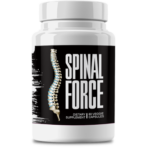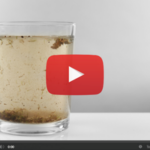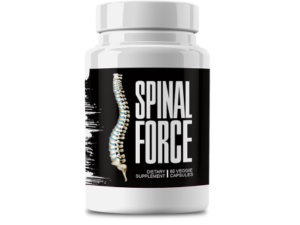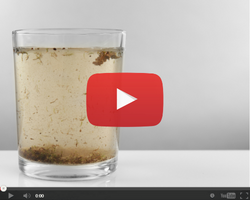This Village-Made Chinese Pain Reliever Eliminates Back And Joint Pain!
Diet and Lifestyle Changes for Effective Gout in Knee Treatment

Getting a Grip on Gout in Your Knee: Treatment Insights
What Exactly is Gout and How Does It Mess with Your Knee?
Gout is a type of arthritis that loves to sneak up on you when you're least expecting it, especially at night. It happens due to too much uric acid in your blood and is infamous for causing sudden, intense pain and swelling. When it decides to attack your knee, even simple moves like walking or bending can feel like a herculean task. The knee swells, turns red, and becomes super sensitive, making life pretty uncomfortable.
Spotting the Symptoms of Gout in Your Knee
If you've ever had a gout flare-up in your knee, you know it's no picnic. The pain is intense, accompanied by swelling and redness around the joint. The skin can feel hot and look unusually shiny. These bouts might be short-lived, maybe a day or two, or they could drag on for weeks if ignored. Catching these signs early is key to managing them effectively.
Causes and Things That Put You at Risk
Gout's main culprit is hyperuricemia, which means having high uric acid levels in your blood. Your body might be making too much uric acid or not getting rid of it fast enough, leading to urate crystals forming in your joints, which sparks those painful attacks. Factors that up your risk include genetics, obesity, certain meds, and what you eat and drink. Chowing down on high-purine foods, knocking back too much alcohol, or sipping sugary drinks can all boost your chances of getting gout.
How Diet Plays a Part in Treating Gout in Your Knee
Foods to Dodge for Gout Control
Diet is a big deal when it comes to managing gout. Some foods can make things worse, so it's smart to avoid them. Steer clear of high-purine foods like red meat, organ meats, and certain seafood like anchovies and sardines. Alcohol, especially beer, and sugary drinks can also send your uric acid levels soaring, increasing the risk of flare-ups.
Foods That Can Help Keep Gout at Bay
On the brighter side, some foods can actually help ease gout symptoms. Think low-fat dairy, whole grains, and veggies like kale and spinach. Fruits rich in Vitamin C, such as oranges and strawberries, might help bring down uric acid levels. Including these in your meals could really make a difference in managing gout.
Don't Forget to Stay Hydrated
Staying hydrated is crucial in fighting gout. Drinking plenty of water helps your kidneys flush out uric acid. Aim for 8-10 glasses a day to help prevent those crystal formations in your joints. Herbal teas and broths also count towards your fluid intake, so keep sipping and stay well-hydrated.
Changing Your Lifestyle to Support Gout Treatment
Why Regular Exercise Matters
Exercise is another key player in managing gout. Low-impact activities such as swimming, cycling, or walking can keep your joints flexible and reduce stiffness. Plus, exercise helps with weight loss, which can lower uric acid levels and cut down on gout episodes. Just make sure to check in with a healthcare professional before starting any new workout routine.
Techniques to Tame Stress
Stress can silently stir up trouble, including triggering gout. Techniques like meditation, deep breathing, or yoga can help. These practices reduce stress responses, possibly lessening flare-ups. Taking time to chill out can be as beneficial as any medication.
Keeping Your Weight in Check
Carrying extra weight can put more strain on your joints, intensifying gout symptoms. Maintaining a healthy weight eases pressure on your knees and helps control uric acid levels. A nutritious diet and regular exercise can help shed those extra pounds and keep gout under control.
The Impact of Nutritional Supplements on Gout in the Knee
How Vitamin C Can Help
Vitamin C isn't just good for your immune system. Some studies suggest it might help lower uric acid levels, potentially reducing gout attacks. Think about adding vitamin C supplements to your routine, but always chat with a healthcare provider before starting any new supplement.
Omega-3s for Cutting Down Inflammation
Omega-3 fatty acids, found in fish oil, are famous for their anti-inflammatory properties. They might help ease joint inflammation and pain linked to gout. Adding omega-3 supplements or eating fatty fish like salmon and mackerel could be a smart move for anyone dealing with gout.
Cherries: Nature's Sweet Remedy
Cherries, especially the tart ones, are popular for their potential to lower uric acid levels and reduce gout flare-ups. Whether fresh, juiced, or in supplements, cherries can be a tasty and natural way to manage symptoms. Their antioxidants are believed to be the secret to their effectiveness.
Medical Treatments to Back Up Your Diet and Lifestyle Adjustments
Typical Medications for Gout
While changing your diet and lifestyle is crucial, medical treatments often play a big role too. Nonsteroidal anti-inflammatory drugs (NSAIDs), corticosteroids, and colchicine are common prescriptions to help with pain and inflammation during flare-ups. Long-term meds like allopurinol might be used to keep uric acid levels in check.
When Physical Therapy Might Be the Answer
Physical therapy can be a helpful addition to managing gout, especially when your knee is involved. A physical therapist can create a custom exercise plan to boost joint function and movement. They can also teach you ways to reduce pain and prevent further joint damage, helping you stay active.
Surgery: An Option for Extreme Cases
In rare cases where gout causes significant joint damage or deformity, surgery might be considered. Options like joint fusion or replacement can restore function and relieve pain. These procedures are usually for severe cases and should be thoroughly discussed with an orthopedic specialist.
Keeping Tabs on Your Gout in Knee Treatment Progress
The Power of a Food and Symptom Diary
Tracking what you eat and your symptoms can offer insights into what triggers your gout attacks. A detailed food and symptom diary helps spot patterns and guide dietary tweaks. This practice empowers you to take control of your gout management journey.
Regular Check-Ups with Your Health Team
Regular visits with healthcare providers are key for effective gout management. They can keep an eye on your uric acid levels, tweak medications as needed, and advise on lifestyle changes. These check-ins ensure your treatment plan fits your specific needs and changing circumstances.
Busting Myths and Uncovering Facts about Gout in Knee Treatment
Setting the Record Straight on Common Myths
There's no shortage of myths about gout, so it's important to know the facts. A common misconception is that gout only affects older folks or is solely diet-related. In truth, gout can hit anyone, regardless of age, and while diet plays a role, genetics and other health conditions matter too.
Sticking to Evidence-Based Practices
Effective gout management relies on evidence-based practices. Research-backed strategies include dietary tweaks, regular exercise, and proper medication use. Staying informed about the latest findings can help you make smart decisions about your treatment plan, ensuring the best outcomes.
Combining Diet and Lifestyle Tweaks for Long-Term Gout Control
Crafting a Plan That Sticks
Long-term success with gout management takes a sustainable plan. Set realistic goals, make gradual changes, and stick with it. Remember, it's about progress, not perfection. Small, steady changes can lead to big benefits over time.
The Value of Community Support
Facing the challenges of gout is easier with a supportive community. Whether through a local group or online connections, sharing experiences and advice can be incredibly uplifting. Community support offers motivation, encouragement, and a sense of belonging, keeping you committed to your treatment plan.








